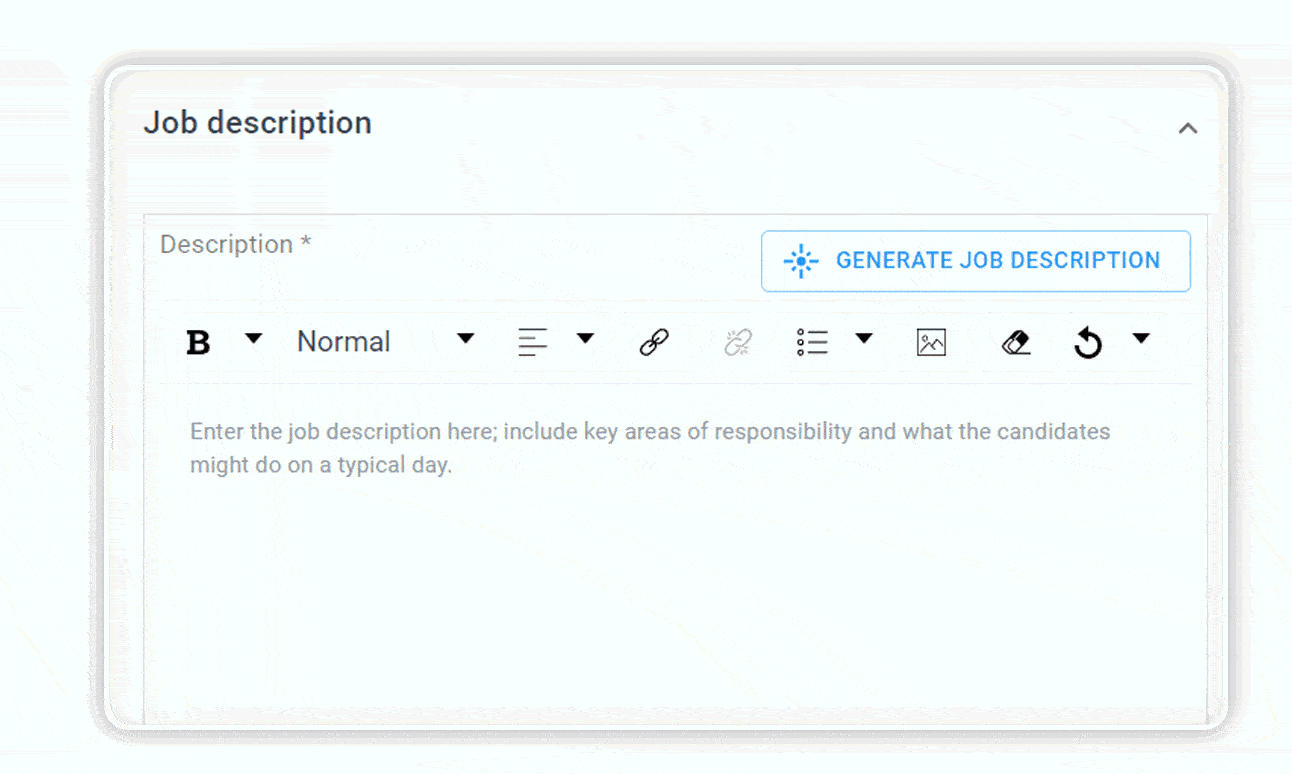Writing a job description often feels like a simple administrative task, something to tick off the hiring checklist. But, in reality, it serves as one of the most powerful recruitment tools. A job description is essentially your first interaction with a potential candidate; it’s your company’s first opportunity to communicate its purpose, values, and expectations.
A well-written job description does more than list responsibilities. It tells a candidate why the role matters, how it contributes to the business, and what being part of the team actually looks like. It’s a key step in ensuring that the candidates you attract are not just qualified, but aligned with your culture and mission.
What Defines a Strong Job Description?
It Communicates Purpose, Not Just Tasks
Job descriptions that focus solely on day-to-day tasks risk underselling the role and the company behind it. While outlining responsibilities is important, it’s equally crucial to communicate who your company is and what it stands for. This can be achieved by weaving in elements of your mission and working philosophy throughout the job description.
From the wording you choose to how you describe team dynamics and organisational goals, every element should reflect your company’s identity. When done well, this gives candidates a clearer sense of the kind of environment they will be stepping into, helping you to attract individuals who align not just with the role, but also with your overall culture and values.
Clarity Should Trump Creativity
While creative job titles might seem modern and appealing internally, they often confuse potential applicants. Roles like “Marketing Rockstar” or “Product Wizard” don’t help your visibility on job boards, nor do they set clear expectations for candidates. Focus on using standardised, professional titles that candidates actually search for.
Similarly, the language in your job description should be concise and clear. Avoid using jargon and internal terminology that may not resonate with external candidates.
Prioritise Essential Skills
It’s easy to fall into the habit of listing every possible desired skill or qualification. However, every additional requirement risks unnecessarily narrowing your candidate pool. Focus on essential skills that are absolutely critical for the role, and avoid creating artificial barriers to entry.
Additionally, highlight behavioural traits and soft skills that will help candidates understand what type of person succeeds in your team.
Transparency Builds Trust
Being transparent about elements like salary bands, benefits, and working arrangements helps set realistic expectations and build trust early on. Including these details (where possible) not only encourages the right candidates to apply but also allows applicants to self-assess their relevance to the role. This can reduce the volume of irrelevant or misaligned applications, saving time for both recruiters and job seekers.
Equally important is showcasing your company culture. Providing insights into your workplace atmosphere, team structure, and organisational values enables candidates to better understand whether they’re a good fit, helping to align expectations before they even submit an application.
How Recruitment Technology Supports Better Job Descriptions
Writing job descriptions requires human insight and careful consideration. However, recruitment technology can provide valuable support throughout the process. The right tools help your team work faster and more efficiently while maintaining quality and consistency.
 AI-Generated Job Description Drafts
AI-Generated Job Description Drafts
One of the most practical features of modern Applicant Tracking Systems (ATS) is the ability to generate job description drafts using AI. Our ATS, for instance, enables HR professionals to input basic role details and receive a structured, professional draft quickly.
Rather than replacing human effort, this tool serves as a starting point, a way to overcome the blank page problem. The draft produced helps you frame the structure of the description efficiently. Ultimately, it’s up to your HR team to tailor and refine the content, aligning the tone and details with your company’s identity and the role’s unique needs.
This approach strikes the right balance between automation and human expertise. The technology speeds up the initial stage, while your team ensures the final output reflects your brand and purpose.
Using Data to Refine Your Job Descriptions
Perhaps one of the most overlooked ways to improve job descriptions is through data. Monitoring your recruitment performance provides valuable insights into the effectiveness of your job descriptions.
With our ATS, you can track key recruitment metrics such as:
- Candidate volume per vacancy
- Application-to-interview conversion rates
- Quality of applicants reaching later stages
- Time-to-hire statistics
- Time-to-fill statistics
By analysing where candidates drop off in the recruitment funnel or whether you’re attracting the wrong profiles, your HR team can identify when your job descriptions need revisiting. For example, if applicant volume is low, perhaps your descriptions are unclear or unappealing. If you’re attracting the wrong type of candidates, your requirements might need redefining.
Recruitment insights provide you with actionable evidence to adjust your job descriptions and refine your hiring strategy continuously.
Why Your Job Descriptions Must Reflect Your Culture
While technology can help you draft, store, and manage job descriptions more efficiently, your company’s tone of voice and culture need to shine through every posting. Relying solely on AI-generated content or generic templates risks producing descriptions that fail to differentiate your organisation.
Every job description should reflect who you are as an employer: your purpose, values, and working environment. Sharing insights about leadership style, team dynamics, and the kind of professional who thrives at your company will help potential candidates decide if they’re a good fit.
Building a Consistent, Scalable Recruitment Process
Creating effective individual job descriptions is important. But what truly elevates recruitment outcomes is building a repeatable and scalable process that maintains consistency over time.
Here’s how our ATS contributes to this:
- AI-powered drafts help speed up early-stage writing
- Document management centralises your approved content
- Recruitment insights highlight areas for improvement
However, your HR team remains central to ensuring every job description communicates your unique brand and attracts the right talent.
Crafting a High-Impact Job Description and Supporting HR with Smart Technology
At its core, writing job descriptions remains a people-centric task. Your HR team’s understanding of your company’s tone, purpose and needs is what ultimately attracts the right candidates. To create job descriptions that truly resonate and perform well, focus on the following principles:
- Use clear, industry-standard job titles
- Open with a purpose-driven summary of the role
- Focus on key responsibilities over daily tasks
- Prioritise must-have skills and avoid overloading requirements
- Communicate your company culture and values
- Include salary bands and benefits (where possible)
- Keep language simple, inclusive and professional
- Use AI tools for drafting, but always personalise
- Centralise job description storage for easy access and updates
- Track recruitment metrics to identify when descriptions need refinement
Technology can help by making processes more efficient and organised, but it cannot replace human judgment.
However, with our ATS, you can:
- Accelerate job description drafting using AI assistance
- Store and manage candidate data and communication centrally for consistency
- Gain recruitment insights to refine your job descriptions over time
This blend of human insight and supportive technology allows your team to focus on what matters most: finding candidates who not only fit the role but also align with your company’s mission and culture.
Ready to enhance your recruitment processes? Discover how our ATS can help streamline your hiring workflow while keeping your human touch at the forefront.

 AI-Generated Job Description Drafts
AI-Generated Job Description Drafts




